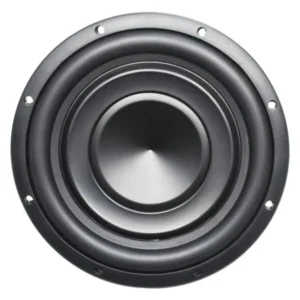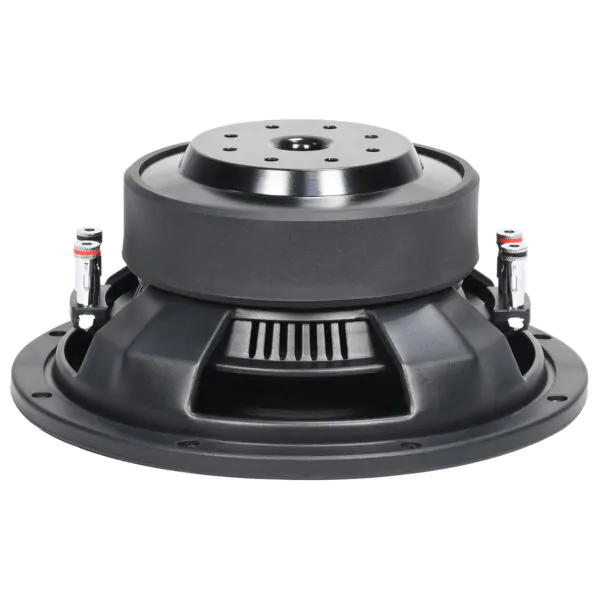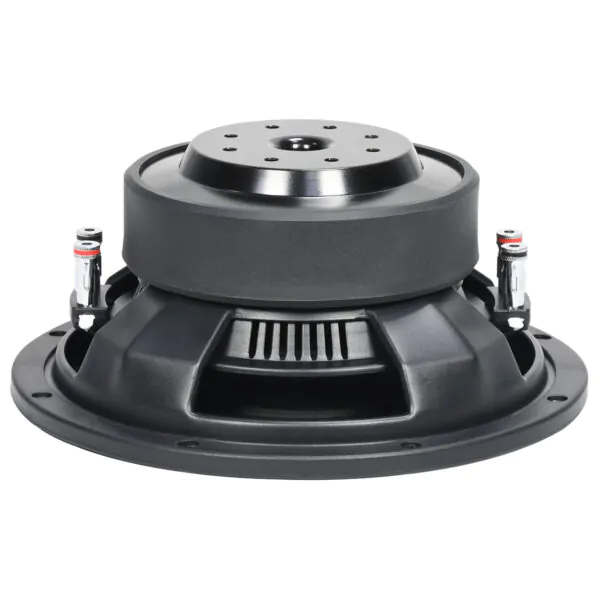The roar of an engine, the grind of gears, the relentless vibration of a construction site—these are the daily realities for engineers and operators of heavy machinery. Amidst this cacophony, maintaining focus and morale is paramount, yet often challenging. While many consider audio systems in equipment like excavators, cranes, or agricultural tractors to be mere background n08585oise, they are, in reality, crucial components of the operator’s workspace, impacting everything from concentration levels to overall job satisfaction. A key element in transforming this environment is the Car Subwoofer, a specialized loudspeaker designed to reproduce the lowest audio frequencies, or bass. But beyond just ‘making the music sound better,’ what practical value does this specific piece of speaker technology hold for the heavy equipment sector? This in-depth analysis will explore the construction, function, and tangible benefits of integrating a high-quality Car Subwoofer into the demanding world of construction and engineering vehicles.
Understanding the Engineering Behind the Car Subwoofer

At its core, a Car Subwoofer is a type of loudspeaker, but one specifically engineered to handle the deep, resonating sounds that standard car or equipment speakers simply cannot manage effectively. To truly appreciate its role, it is essential to first understand the physics of sound reproduction. Standard door or dash speakers, often referred to as full-range or coaxial speakers, are designed to reproduce a broad spectrum of frequencies, typically from around 50 Hz up to 20,000 Hz. However, when attempting to play very low bass frequencies (generally below 80 Hz), these smaller speakers struggle. The cone, which is the vibrating membrane that moves air to create sound, lacks the necessary size and excursion capability (the distance it can move forward and backward) to push the significant amount of air required to generate a rich, deep bass note.
A Car Subwoofer overcomes this limitation through specialized design. It features a significantly larger cone diameter, typically ranging from 8 to 15 inches. This substantial size allows the speaker to displace much more air with each movement, thereby producing those palpable, low-frequency sound waves. Furthermore, the subwoofer utilizes a heavy-duty voice coil and magnet assembly. The voice coil, which is the engine of the speaker, is wound with thicker wire and often has a higher thermal rating to withstand the substantial electrical power required to move the large cone. The powerful magnet structure ensures precise control over the cone’s rapid movements, preventing distortion even at high volume levels, which is a critical consideration in a noisy engineering environment.
Crucially, Car Subwoofers are almost always mounted in a dedicated enclosure. This enclosure, whether sealed or ported, is not just a protective box; it is an integral part of the acoustic design. A properly engineered enclosure acoustically loads the driver, ensuring the deep bass frequencies are efficiently radiated into the listening space. Without an appropriate enclosure, even the most powerful subwoofer would sound weak and muddy, demonstrating the fundamental reliance of these specialized loudspeakers on their housing for optimal performance.
The Distinctive Characteristics of an Effective Car Subwoofer
Several key features distinguish a high-performance Car Subwoofer that is suitable for a heavy-duty application. These characteristics are critical for longevity and effective operation in a harsh, vibrating environment.
1. Durable Construction and Materials: The operating conditions within heavy machinery are far from ideal. Extreme temperatures, constant dust exposure, and persistent, intense vibration necessitate robust build quality. Therefore, a quality Car Subwoofer features cones made from resilient materials such as treated paper, polypropylene, or even carbon fiber, all chosen for their balance of stiffness and low mass. Surrounds—the flexible ring connecting the cone to the basket—are often made of durable, high-excursion rubber or foam, designed to withstand repetitive, high-amplitude movement over long periods without cracking or failure.
2. High Power Handling (RMS): Power handling is arguably the most critical factor in a noisy environment. The Root Mean Square (RMS) power rating indicates how much continuous power the subwoofer can safely handle. In a crane or bulldozer, the audio system must often overcome a consistent background noise level exceeding 80 dB. To project clear, undistorted bass over this noise, the subwoofer needs significant power, meaning a high RMS rating is essential. This allows the system to play louder without overheating the voice coil or damaging the speaker’s suspension.
3. Low-Frequency Extension and Sensitivity: The true measure of a subwoofer is how low it can play and how efficiently it converts power into sound. A good Car Subwoofer should have a low resonant frequency (), indicating its ability to dig deep into the sub-bass territory (e.g., down to 25 Hz). Furthermore, its sensitivity rating (measured in dB/W/m) determines how loud it will be with a given amount of power. A higher sensitivity means the subwoofer can achieve the desired volume level with less amplifier power, which is beneficial for conserving the vehicle’s electrical resources.
4. Impedance and System Integration: Subwoofers come with various voice coil configurations (single, dual) and impedance ratings (2-ohm, 4-ohm, 8-ohm). For the operator or engineer setting up the system, understanding this is vital for proper amplifier matching. The impedance must be correctly matched to the amplifier’s stable operating range to ensure maximum power transfer and prevent the amplifier from overheating or failing.
Practical Value: Why Deep Bass Matters in Heavy Machinery
The integration of a Car Subwoofer into an engineering vehicle is not merely an indulgence; it provides demonstrable, practical benefits that contribute to safety, focus, and operator well-being.
Enhanced Auditory Focus and Concentration: Low-frequency sound is not just ‘heard,’ it is felt. The steady, rhythmic nature of deep bass can act as a psychological anchor, subtly mitigating the distracting effects of constant, high-level ambient machine noise. By providing a full, rich audio spectrum, the brain is not straining to fill in the missing low-end information, leading to reduced auditory fatigue. When operators can easily and clearly distinguish between the music or communication audio and the monotonous drone of the engine, their mental acuity and focus on the task at hand are significantly improved. This reduction in cognitive load is invaluable during long shifts.
Improved Morale and Work Environment: In an often solitary and physically demanding job, music serves as a critical morale booster. A high-fidelity audio system, anchored by a robust Car Subwoofer, transforms the cramped cab into a more enjoyable and less stressful workspace. The full, immersive sound quality that deep bass provides can alleviate the feelings of isolation and monotony inherent in operating heavy equipment, leading to a more positive attitude and increased productivity. Happy operators are safer and more efficient operators.
Clearer Communication and Warning Systems: While the primary function is entertainment, the subwoofer can also play a subtle role in communication clarity. When the overall audio system can reproduce all frequencies accurately, voice communication (such as two-way radio traffic or system alerts) delivered through the primary speakers becomes easier to interpret because the competing, low-frequency engine noise is effectively masked or overridden by the clear, full-range audio.
Durability in Harsh Environments: Because a dedicated Car Subwoofer is built to handle significant power and high excursion, it is far less likely to fail under the constant vibration and stress of a construction environment than a standard, undersized speaker that is being pushed past its limits trying to reproduce bass. This durability translates directly into fewer replacements and lower maintenance costs over the lifespan of the equipment.
Integrating the Car Subwoofer System: Considerations for Installation
Successfully installing a Car Subwoofer in heavy equipment requires attention to specific engineering and spatial challenges. Unlike a passenger car, space is often at a premium, and the available power supply must be considered carefully.
Placement and Enclosure Design: Finding the ideal location for the subwoofer enclosure is paramount. Under-seat enclosures or custom-fit boxes that utilize otherwise wasted space behind or beneath seating are common solutions. The enclosure must be rigidly mounted to withstand vibrations without rattling or detaching. In many applications, a sealed enclosure is preferred due to its compact size and superior control over the cone’s movement, offering a tighter, more precise bass response which is often desired for an industrial setting.
Power Requirements and Electrical System Integration: A powerful Car Subwoofer requires a dedicated external amplifier. This amplifier must draw substantial current, and the vehicle’s electrical system must be capable of providing this power without stressing the alternator or draining the battery. Professional installation involves running heavy-gauge power cables directly from the battery to the amplifier, utilizing proper fusing, and ensuring a clean ground connection to maintain system stability and prevent electrical interference.
Acoustic Tuning and Crossover Settings: The final step involves tuning the system to the specific acoustics of the cab. A low-pass crossover filter is used to ensure the subwoofer only reproduces the lowest frequencies (typically set between 60 Hz and 100 Hz), while the main speakers handle the rest of the sound spectrum. Proper setting of the crossover point and the subwoofer’s phase alignment is essential to achieve a seamless, integrated sound where the bass does not sound boomy or disconnected from the rest of the music, resulting in a cohesive and high-fidelity listening experience.
In conclusion, the Car Subwoofer is far more than an audio accessory for the operator of heavy machinery; it is a vital tool for creating a more focused, enjoyable, and ultimately safer working environment. By leveraging specialized loudspeaker technology, engineers can turn a noisy cab into a sanctuary of high-quality sound, thus benefiting the mental state and operational efficiency of the user.
Frequently Asked Questions (FAQ)
Q1: Will installing a Car Subwoofer drain the heavy equipment’s battery? A1: A properly installed system with a dedicated, efficient amplifier and correct wiring should not significantly drain the battery during operation. However, leaving a powerful system on when the vehicle is off can cause drainage. It is crucial to use an amplifier that is wired to switch on and off with the vehicle’s ignition.
Q2: What size Car Subwoofer is best for a tractor or excavator cab? A2: Given the limited space in most cabs, an 8-inch or 10-inch subwoofer is often the most practical choice. When housed in a compact, properly sealed enclosure and powered by a quality amplifier, these sizes can provide more than enough deep bass to overcome ambient machine noise.
Q3: Does the constant vibration in heavy machinery damage the subwoofer? A3: Standard, low-quality subwoofers may fail due to constant vibration. However, a quality Car Subwoofer designed for demanding automotive use is built with robust materials like durable rubber surrounds and heavy magnet assemblies that are engineered to withstand significant and prolonged mechanical stress, making it highly resilient in a heavy machinery environment.






I don’t think the title of your article matches the content lol. Just kidding, mainly because I had some doubts after reading the article. https://www.binance.info/register?ref=IHJUI7TF
I have been absent for some time, but now I remember why I used to love this blog. Thank you, I will try and check back more often. How frequently you update your website?
I don’t think the title of your article matches the content lol. Just kidding, mainly because I had some doubts after reading the article. https://accounts.binance.info/pt-BR/register-person?ref=GJY4VW8W
Wohh precisely what I was searching for, thanks for putting up.
**revitag**
revitag is a daily skin-support formula created to promote a healthy complexion and visibly diminish the appearance of skin tags.
**neurogenica**
neurogenica is a dietary supplement formulated to support nerve health and ease discomfort associated with neuropathy.
**cellufend**
cellufend is a natural supplement developed to support balanced blood sugar levels through a blend of botanical extracts and essential nutrients.
**prodentim**
prodentim is a forward-thinking oral wellness blend crafted to nurture and maintain a balanced mouth microbiome.
**flowforce max**
flowforce max delivers a forward-thinking, plant-focused way to support prostate health—while also helping maintain everyday energy, libido, and overall vitality.
**hepato burn**
hepato burn is a potent, plant-based formula created to promote optimal liver performance and naturally stimulate fat-burning mechanisms.